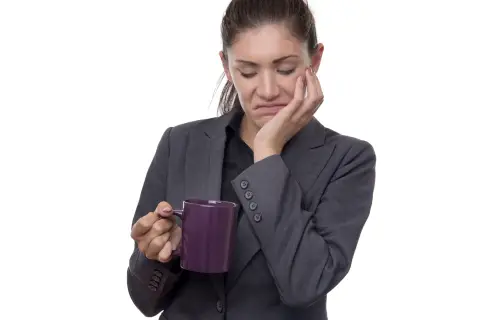Though there are many coffee drinkers out there who don’t necessarily like much strength to their cups, a watery cup of coffee will probably annoy and disappoint anyone and everyone, coffee drinkers or not. If you’ve ever brewed a coffee like this and wondered “Why does my coffee taste watery?”, there are a few things you could look into and adjust such as grind size, amount of coffee used, water contact time, and more, depending on your brewing method, all of which are discussed further in this article. No more weak-tasting brew or unwanted sour or acidic flavor notes!
Table of Contents
Why Does My Coffee Taste Like Water and How Do I Make it Stronger?
You might be surprised to see the number of possible reasons that could explain why your coffee’s not strong enough. It can vary from grind size to uneven water distribution, all the way up to the performance of your coffee maker. So, here are a few things you could look into to solve your weak coffee issue.
The Grounds Are Too Fresh After Roasting
After you roast a batch of coffee beans at home or anywhere else, they will need time to degas before grinding them. This is a highly important process when it comes to getting great, flavorful coffee, no matter the brewing method. During the process of degassing, the roasted beans release most of the built-up CO2 gas inside them. A small amount of CO2 is generally retained by the beans after degassing, which adds to the flavor of the coffee.
If the beans aren’t given sufficient time to degas before you grind and start brewing, small gas bubbles form around the grounds when they come in contact with the water, which prevents the beans from properly soaking in the water. Therefore, what you end up with is very watery, weak-tasting coffee.
While degassing can take anywhere from 2-12 days until completion depending on multiple factors, this is a process that can’t be skipped over or shortened. When you’re degassing roasted beans at home, be patient and leave them for the proper number of days to degas. This period may change depending on your brewing method.
Even after this degassing period, it’s best to check how far the beans have degassed by putting them into a resealable bag and leaving them overnight. If the bag is puffed up by morning, then they are still degassing and aren’t ready to grind yet.
The Roast is Too Mild
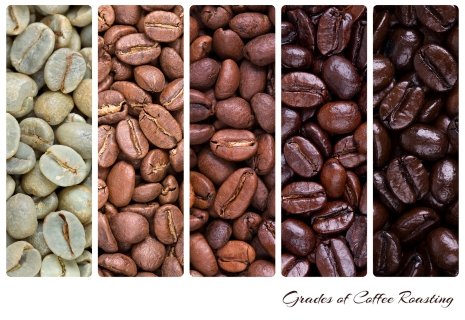
Another likely reason for weak-tasting coffee even before grinding is using a batch of beans that haven’t been roasted enough. Everyone’s preference is different when it comes to coffee strength. Some like it very strong and some like it mild. But if your coffee ends up with almost no flavor and barely any body, then consider roasting the beans a little longer until they become darker. Medium and dark roasts are generally the most common roasts used by coffee drinkers who prefer full body and robust flavors.
Your Coffee Grind Size is Too Large
Coffee can be brewed in numerous ways to make a countless number of java drinks, making the extraction process particularly important for every method to produce distinguishable drinks. For some brews, a slow extraction process is required, which can only be accomplished by using coarse coffee grounds, whereas, for others, a fine grind is required for a faster extraction process.
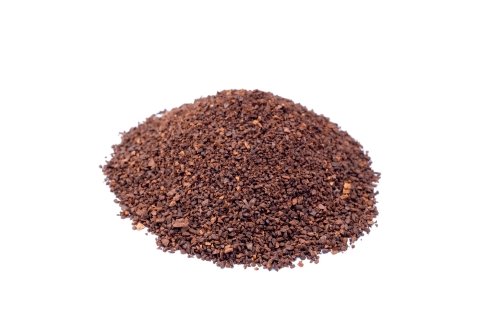
If a fine grind were to be used for a drink that required a slow extraction process, then you’d end up with overly strong, bitter-tasting coffee. For these reasons, there are specific grind sizes for every style of coffee:
Drip Coffee
For drip coffee, a medium grind size with the consistency of regular sand will be just right to extract the right amount of flavor.
Espresso
A fine grind of coffee beans is required to make an espresso. This is the most commonly available grind size in stores, with a finer consistency than table salt. It will take you just around 30 seconds to pull a shot of espresso from an espresso maker, which is why the grind has to be so fine to be easily extracted.
French Press
Ideally, a coarse grind with the consistency of sea salt is best for french press coffee. A cup of french press made with coarse grounds will take around 4-6 minutes to make. This grind size will give you the right flavors. Although, some use a finer grind for a faster french press brew. This doesn’t extract the flavors well, which leads to coffee that tastes watered down as compared to a coarse grind brew.
Chemex Pour Over
A medium coarse grind similar to the feel of rough sand is ideal for Chemex pour-overs or any other cone-shaped pour-over brewers. This is the same grind that you would use for an automatic drip coffee maker.
Cold Brew
For a cold brew, a very coarse grind would be required, similar to the consistency of crushed peppercorns. Pick a really good burr grinder to get this. This method of brewing generally takes 14-18 hours until completely brewed, which leaves you with a flavorful coffee with almost zero bitterness and acidity.
The lengthy time is also due to cold water being used to brew instead of hot water, which is why such a coarse grind is required for the right speed of extraction.
You’re Using Very Soft Water
The type of water you use is as important as the grind size and freshness of coffee beans when brewing great coffee. Soft water is not recommended to use to brew coffee for multiple reasons related to possible chemical contents.
Besides this, it is mainly not recommended due to the lack of magnesium, calcium and sodium present in it. Magnesium ions in water help extract sharper and fruitier flavors, whereas calcium highlights heavier, creamier notes. These minerals are hostile to acidic notes. Magnesium will have the most impact on extraction, followed by calcium and then sodium.
In general, try using bottled water instead of filtered water. You can even make sure of its mineral and magnesium content by reading the label.
Your Coffee to Water Ratio is Off
One of the first solutions to come to mind after making a weak cup of coffee is to add more coffee grounds to the brew. However, it’s not just that. It’s about getting the right coffee-to-water ratio, and for every brewing method, there is a different ratio.
Using too much coffee will give you too strong a flavor, but use too less, and your coffee will taste quite diluted. Here are some coffee-to-water ratios for a few common brews. These ratios are based on weight and are measured in grams.
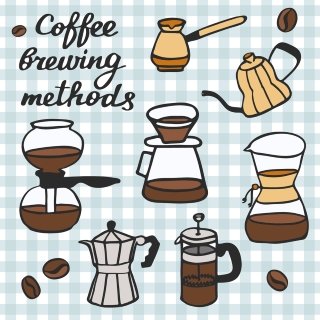
Drip Coffee
For drip coffee, a ratio of 1:15 is required. A larger volume of water is used due to the lengthy extraction and brewing period.
Espresso
For espressos, the ideal ratio of coffee to water is 1:2. With espressos, there isn’t any hard rule on using this one ratio. It can vary from 1:1 to 1:3, depending on shot sizes. In the end, you should ensure that the taste and mouthfeel are as you like it to be.
French Press
A good ratio for french press coffee is 1:14 when brewing. However, this can change depending on the strength you like. For a weaker cup of coffee, 1:17 should suit. But if you’re looking for a strong cup, then a ratio of 1:12 should instead be used. A french press generally requires a higher ratio than drip due to its method of coffee grounds submersion. The extraction process will take a little time, so it is recommended to lean more toward a strong ratio in general.
Chemex
For a good body in the coffee without bitterness, a ratio of 1:16 is highly recommended. A Chemex filter is quite thick for a coffee filter. This slows the drip rate of the water while increasing the brew time. The increased brew time leads to higher extraction. The resulting brew could become too extracted and quite bitter.
Therefore, a lower coffee-to-water ratio balances out the increased brew time that’s caused by the thicker filter. If lesser water is used, then fewer molecules will be extracted from the coffee beans. This is a recommended approach to get a more balanced cup of coffee, which is why a ratio of 1:16 is perfect.
Cold Brew
For cold brews, the coffee-to-water ratio can be a bit confusing. There are multiple ratios for different strengths of coffee. They are quite different from regular coffee ratios since most of the time, ice will be an added-on component of the cold brew when you drink it. The ice will dilute the coffee a bit, which is why stronger ratios are required for a cold brew. Without complicating things, 1:14 is a good ratio to follow. This won’t give you a very weak or a very strong coffee even after the ice is added to it.
Uneven Water Distribution
Another major possible reason for why your coffee tastes watered down could be uneven water distribution in the water filter. The water is supposed to evenly go through the grounds and extract the coffee flavors this way. There are multiple ways by which the coffee could be under-extracted.
First, make sure to check that the coffee bed in the filter is flat and well-distributed and that there aren’t any uneven patches. Water will choose the path of least resistance when passing through any material, so if there’s any patch in the filter without coffee, it will pass through that patch, giving you barely extracted coffee. An even distribution of grounds will help the water soak through properly and give it more time to extract.
Sometimes, it could be an error in the machine that gives under-extracted and weak coffee. If you prepared a rather weak-tasting coffee, then be sure to check the coffee bed. If there’s a depression at its center but everything around it is looking flat, then this means that the machine’s water dripping system is inefficient.
When it comes to filters, a cone-shaped filter is a better choice than a regular basket filter. The grounds aren’t spread across the surface to become a thin layer, instead, it’s all centered and will give the water more time to pass through the grounds as well. Overall, the extraction process will be far more efficient than using a basket filter.
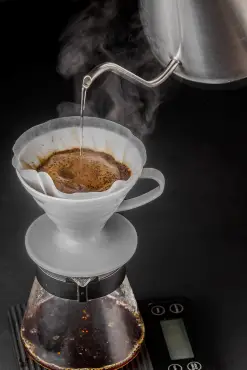
If you’re using a manual pour over, use a gooseneck kettle to pour slowly and distribute the water evenly.
You’re Not Brewing Long Enough
The brew time for any type of coffee will also strongly impact the final taste. If every other step is right but the coffee is brewed for too long, it will result in strong, overly bitter coffee. But if it hasn’t brewed for long enough (under-extraction), you will get a strange amalgamation of acidic and sour tones, all while remaining watery. The brew times vary for all methods of coffee making.
Drip Coffee
When brewing with a drip coffee maker, there is one major thing to keep in check which will determine the brewing and dripping time other than the machine’s setting. Make sure the grind size is appropriate for drip coffee; not too coarse. If it is too coarse, the extraction won’t be nearly as efficient. If this is in check, then you should end up with a perfect brewing and dripping time of 3-5 minutes, no less than this.
Espresso
For an espresso, 20-30 seconds will be long enough for full extraction. To achieve this time, the water should be hitting the coffee bed of fine grounds evenly.
French Press
Since coarse grounds are used for french press coffee, a longer brew time is required than the previous 2 methods. 4-5 minutes of brewing is just right for french press coffee.
Chemex
For a Chemex brew, 3.5 to 4.5 minutes will be just right. This amount of time is necessary due to the medium coarse coffee grounds used. Besides the grind size, however, a gooseneck kettle is a good option to get the right controlled water stream, and therefore, the perfect amount of time for the coffee extraction process.
Cold Brew
A cold brew takes the longest time to be ready among the most popular coffee brewing methods due to its very coarse grind and absence of hot water in the brewing process. Anywhere between 14-18 hours will be fine for a cold brew, giving you neither watery nor overly strong coffee. Though it may seem daunting waiting this long, let it brew overnight so that you can wake up to a perfectly brewed, fresh cold brew. However, you will have to tweak the brewing time as per your liking between this suggested time limit.
Water Isn’t Hot Enough
Most brewing methods give you coffee ready within minutes. This is primarily due to the high temperature of water used during the brewing process. The grind sizes used for these methods require very hot water to break down their compounds, which is what gives them their respective flavors. But if the water that hits the grounds isn’t hot enough, then the desired flavors and aromas won’t be extracted sufficiently.
It’s also important to make sure you have the right temperature of water ready as per your brewing method before you add it to your coffee maker because most automatic coffee makers won’t have the option to increase the water temperature. The machines that do have an option like this have fixed temperatures as per the selected brewing method, but no way to adjust temperatures.
For manual coffee makers, you would need to use boiling water at very precise temperatures that are right for each brewing method. For example, a french press would require a temperature of around 195 degrees Fahrenheit for the right amount of extraction. For other manual coffee preparations, consider doing a little research into temperature requirements beforehand and always measure the temperature of the water before it is added. Once extracted, coffee should be consumed immediately or it will get cold fast if allowed to remain in its French Press or other coffee carafes.
Your Coffee Machine is Dirty
Why is my coffee maker suddenly making weak coffee? If you’re wondering why your coffee machine isn’t brewing coffee as it used to when you first bought it, it’s more than likely that it needs a good cleaning. If every component of your coffee maker isn’t cleaned regularly, then you’re bound to have weak-tasting coffee coming out of it, especially if it’s a drip or espresso maker.
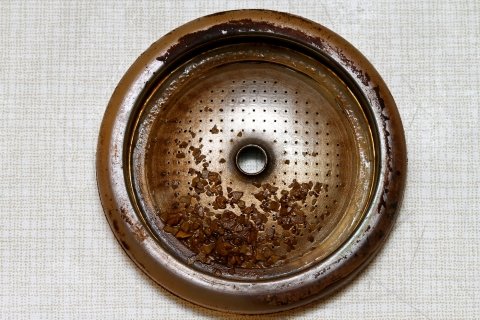
When cleaning your coffee maker, make sure to brush the group head and filter with a damp brush to get rid of old coffee grounds. If these particular components are not clean, then you’ll only be getting under-extracted and weak coffee.
To clean a drip coffee maker, a vinegar mixture is recommended. For this, mix vinegar and water, half and half, and pour it into your machine. Brush the insides thoroughly, and then rinse them out properly with water.
Why Does My Keurig Coffee Taste Watery?
There is a specific grind size, coffee-to-water ratio, and brewing time for a Keurig coffee maker as well. A medium-to-fine grind size with a texture similar to table salt is ideal for a Keurig coffee maker. The brewing time should be under 3 minutes. The most recommended coffee-to-water ratio is 1:16. This means that for every 10 grams of coffee used, you add 160 grams worth of water.
If your coffee still turns out to be watery and under-extracted, then there’s only one major reason why your Keurig coffee maker is giving out watery coffee. When a K-cup is inserted into a Keurig coffee maker, a thick needle from the machine punctures the top of the K-cup by going through the foil and touching the top of the grounds.
Sometimes, the grounds can get sucked inside the needle shaft, creating a blockage. Due to this, not enough water may come through or some water may spread around the coffee pod instead. The increase in this blockage will only result in weaker and weaker coffee and the needle may even stop puncturing the K-Cup, and so, the more you use your Keurig machine, the more often you must clean the coffee grind build-up in and around the needle.
However, unclogging the needle is pretty simple to do. You could use a toothpick and carefully clear the needle of any stuck coffee grounds and grime. If there is any dried coffee around the pod holder, then make sure to clear that too. Once this bit of cleaning is done, you should be getting strong coffee from your Keurig machine once again.
Why Does My Nespresso Coffee Taste Watery?
The possible explanations behind a watery cup of Nespresso coffee are similar to those of a Keurig coffee maker. The ideal grind size for Nespresso coffee is medium-to-fine, though a slightly finer grind is also used when making espressos. The brewing time is around 30-60 seconds for espresso. Every Nespresso capsule contains 5.5g of coffee, to which 25g of water is needed for the brew. These directions, if followed properly, will give you perfect coffee, not too bitter and not too weak.
If you’re still getting weak coffee from your Nespresso maker, then this could only mean that your machine needs to be checked in a few ways. First, in case of any water leakage, be sure to tighten the metal cap at the top of the machine. Next, make sure your capsule basket isn’t loose and fits well in place. Another possible, albeit rare, reason for weak coffee could be that your capsule is broken. You have 2 options in this case, either throw the capsule out and use a new one or try to fix it by holding it together with a rubber band. The easier option is the former, but it could also be expensive if you happen to have a bad batch.
After checking all this, if you’re winding up with weak coffee, then this could only mean that your Nespresso needs a solid cleaning. Using a dirty Nespresso machine is one of the most likely reasons behind under-extraction and therefore, weak coffee.
To clean your Nespresso machine, empty the water tank and capsule holder. Then, add a descaler-water solution to the water tank (follow the instruction on the packet). Allow all the water to flow through the machine by pressing the “Big Cup” button. Lastly, rinse it out with one liter of clean water. Cleaning your coffee maker is highly important to do once every few months to prevent any bacteria build-up and to continue enjoying flavorful coffee.
How to Fix Watery Coffee or Make it Stronger After It’s Brewed
Once you’ve already made a pot of weak coffee, it can be annoying to think of redoing the whole process to get a stronger brew. To avoid this, here are a few suggestions on how to fix watery coffee.
Run Another Cycle Through the Coffee Grounds Using the Brewed Coffee Instead of Water
An often-used quick-fix way of getting stronger coffee is by re-brewing your existing coffee with the same used grounds. This will extract more out of the grounds instead of diluting it further with fresh water and will give you a coffee with more body this time around. This is mainly applicable to drip coffee makers.
Add Flavoring to the Coffee
To hide the taste of bad coffee or add more flavor to weak coffee, mixing in some milk and sugar is probably the easiest way to go. However, some may not like milk and sugar with their coffee. So, instead of this, you could always add a little cocoa powder to give it a stronger kick and some chocolate flavor or add a dash of cinnamon powder for a different flavor and slight sharpness.
Add a Little Instant Coffee
To strengthen a cup of weak coffee, add just a little instant coffee powder to it and give it a good mix. Be careful not to overdo it, however, as extra coffee powder could leave you hit with way more caffeine than needed.

